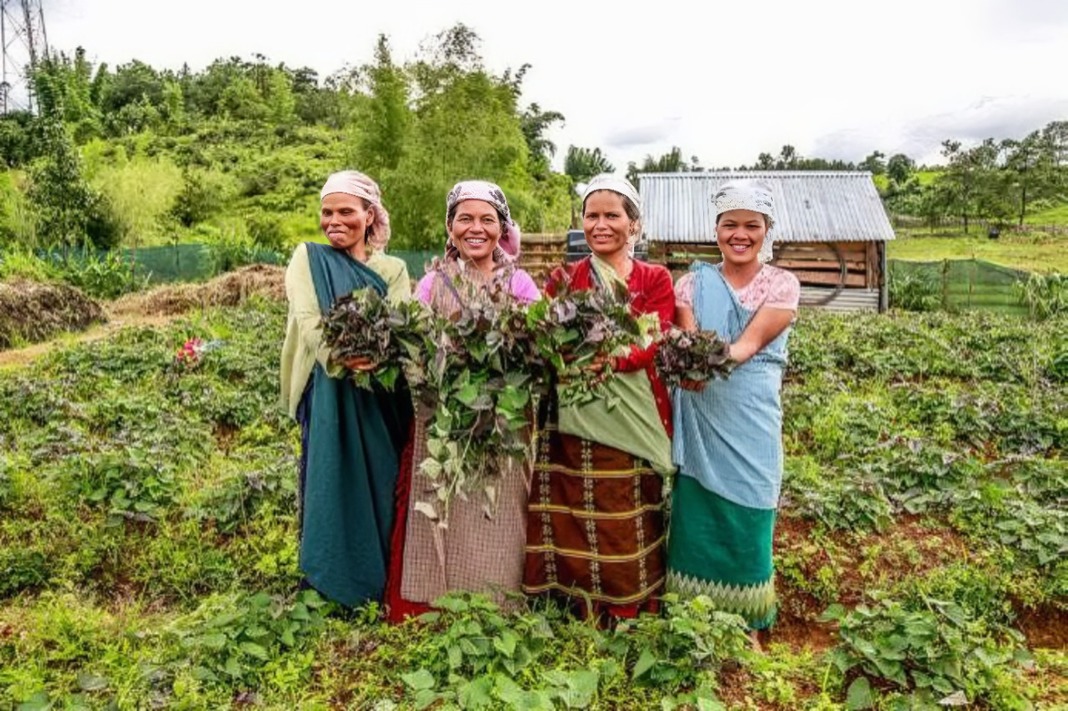ROOPAK GOSWAMI
Shillong, Oct 19: Despite less than half of Meghalaya’s population depending on agriculture, the state has managed to perform better than the national average in terms of agricultural household income.
This is according to the All India Rural Financial Inclusion Survey (NAFIS) for 2021-22 published by NABARD recently. The findings offer primary data based on a survey of 1 lakh rural households across the country covering various economic and financial indicators in the post-COVID period.
Across the country, the average monthly income of households saw a substantial rise of 57.6% over a five-year period, increasing from Rs. 8,059 in 2016-17 to Rs. 12,698 in 2021-22. This indicates a nominal compound annual growth rate (CAGR) of 9.5%. Annual average nominal GDP growth during the same period (on financial year basis) was 9%. When considering all households together, the average monthly income stood at Rs. 12,698, with agricultural households earningslightly more at Rs.13,661, compared to Rs. 11,438 for non-agricultural households.
According to NAFIS data, there are 52 % Non-agricultural households and 48 % Meghalaya agricultural households. Agricultural Household’ is defined as a household that received some value of produce more than Rs 6500 from agricultural activities and had at least one member who was self-employed in agriculture during the reference agricultural year (2021-22).
According to the NAFIS 2021-22 report, the average monthly income for agricultural households in Meghalaya stands at Rs 14,734 as compared to Rs 13,661 of the country.
The reasons could be due as many households in Meghalaya, while not directly dependent on agriculture, engage in complementary sectors like tourism, small-scale industries, and handicrafts. These sectors provide additional income streams, reducing dependence on agriculture while boosting overall household income. Agricultural households often engage in other activities, including wage labor, small-scale businesses, and government employment, contributing to higher cumulative income. This multi-sourcing of livelihoods ensures greater financial stability.
As regards saving behaviour of households, 58% of households in the State reported savings as compared to 66% in the country. And more interesting is that there are 97 % households in the state where at least one member reported saving. The survey also explored participation of women members in household savings, particularly with institutional sources. Eighty eight percent of the saver households in Meghalaya were women.
Though in Meghalaya only 19% households made investment in the agricultural sector, the average investment was Rs 61,501 which was higher than that of the country.
The survey also looked into rural indebtedness which has drawn the attention of scholars and policymakers alike. Debts may be seen from two perspectives. On the one hand, debt becomes vital for the sustenance of rural households; helping them overcome income disruptions or to avail unexpected opportunities. On the other hand, the households may get trapped in a vicious cycle of debt that may have devastating impact on households. Under NAFIS 2021-22, a household was considered indebted if it had any outstanding loan on the date of survey.
In Meghalaya, 31% of households had debt as compared to 52% households in the country. On the other hand, 32% in the State had taken out a loan.
Any comprehensive survey-based study on financial inclusion would be incomplete unless it explores the status of microfinance institutions which are critical to ensuring last-mile linkage with the underserved segment of the society. Microfinance was introduced with a view to unleash the productive capacities of poor people dependent on self-employment. In Meghalaya, only 11% households took loans from microfinance institutions which indicates the need to intensify the efforts to improve the penetration of micro-finance institutions.
The households were asked if any of their members were associated with any kind of microfinance groups including Self Help Groups (SHGs), Joint Liability Groups (JLGs), or any other livelihood collectives. As regards availability of self help groups, 63.6% households in Meghalaya reported availability of self help groups. As regards JLGs, it was blank in the state as there was no report of any households having association with it.




